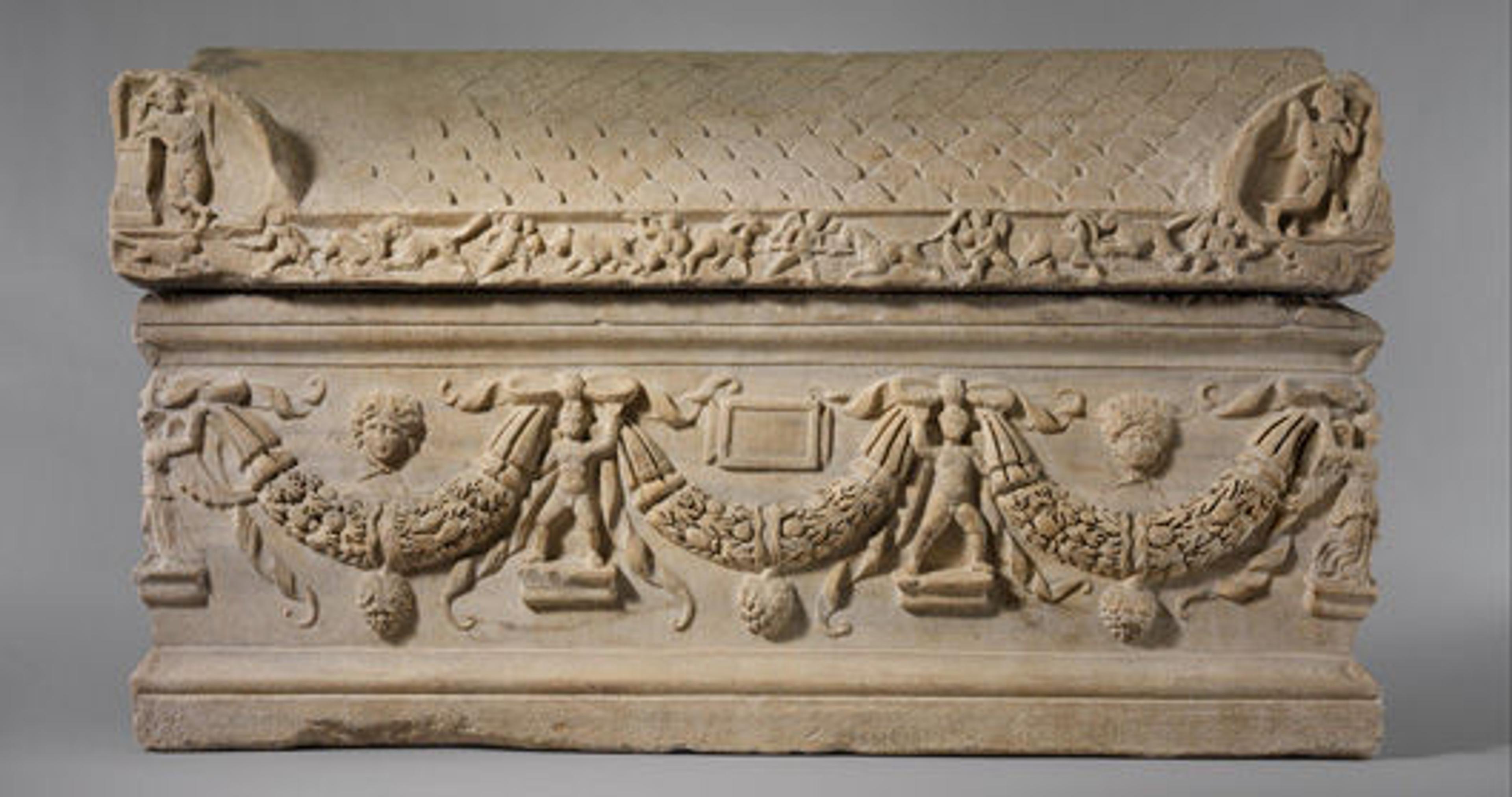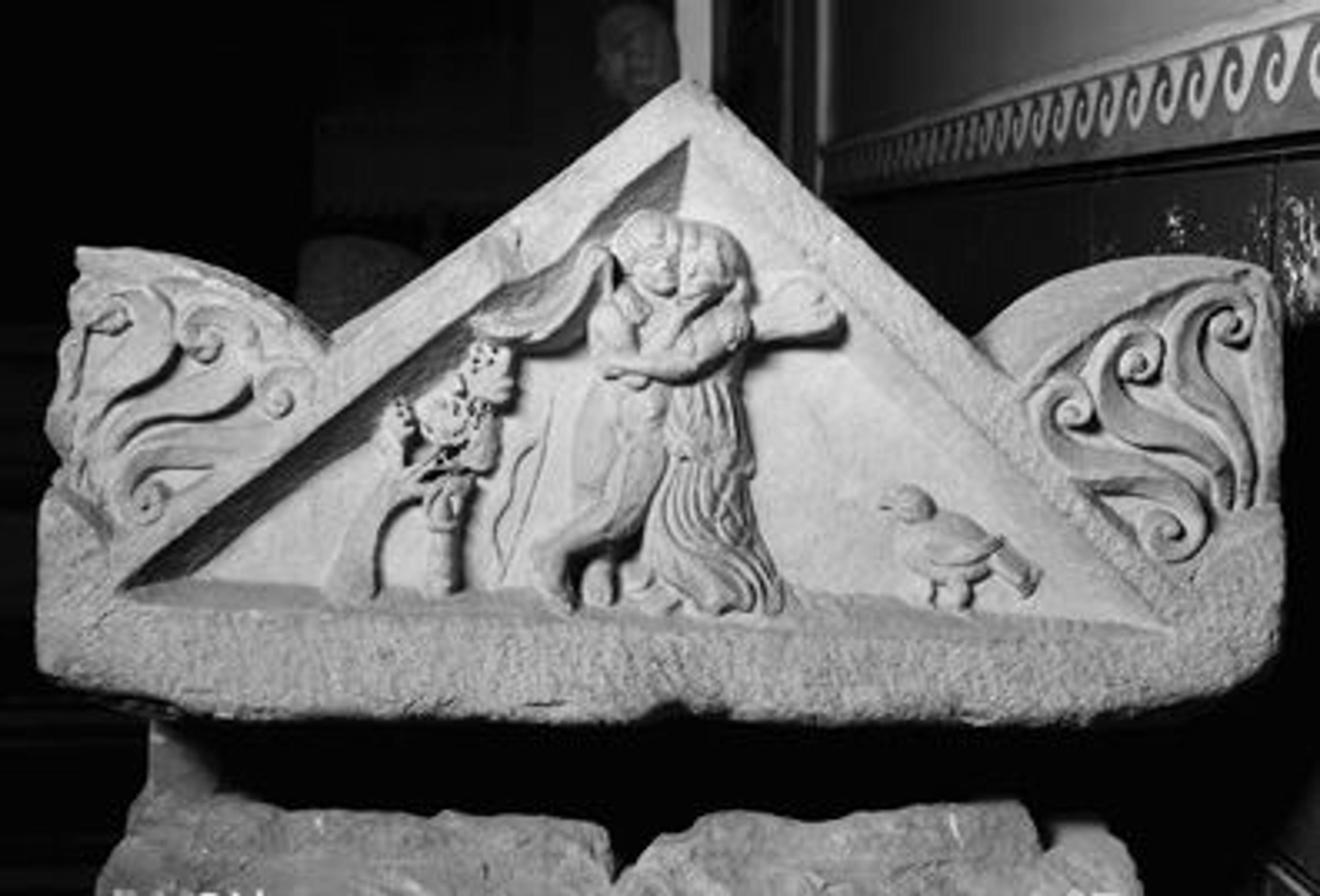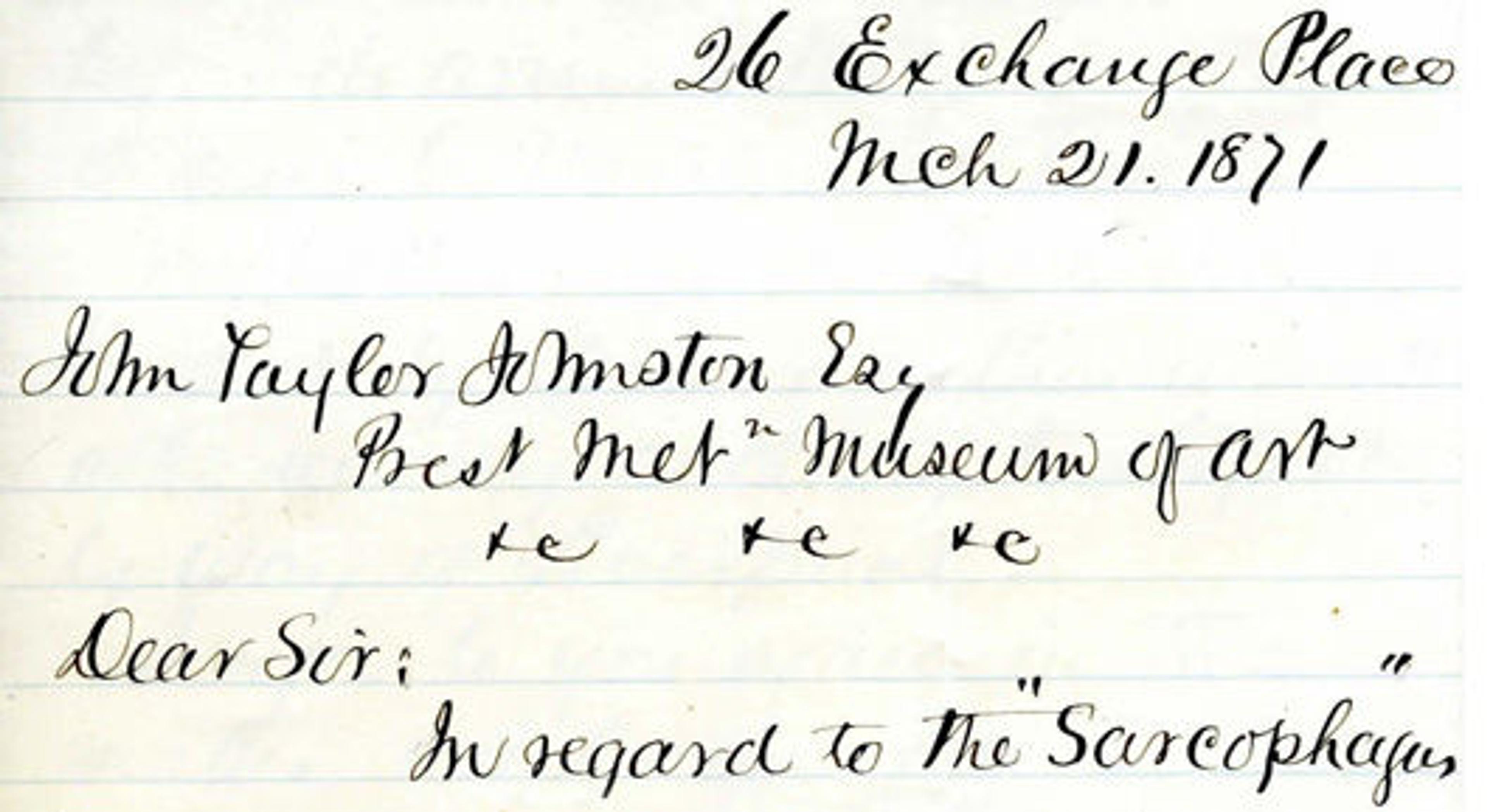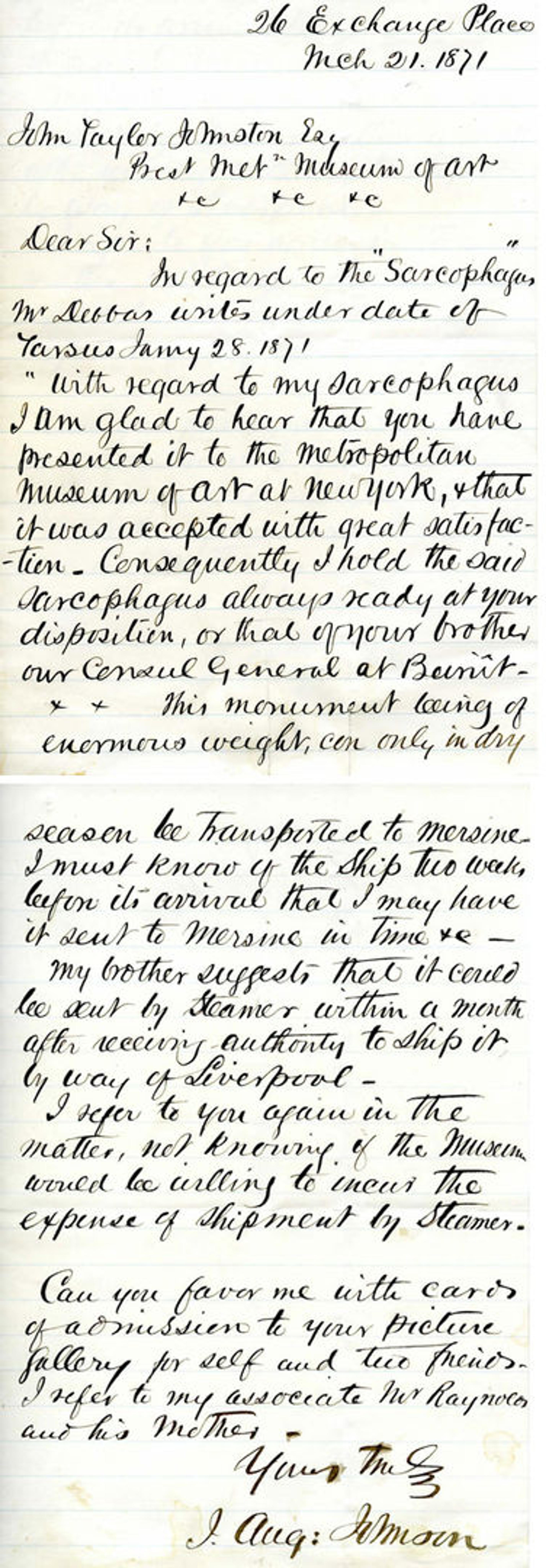This Weekend in Met History: November 21

Marble sarcophagus with garlands. Roman, Severan period, ca. A.D. 200–225. Marble, Proconnesian; Overall: 53 x 88 in. (134.6 x 223.5 cm). The Metropolitan Museum of Art, New York, Gift of Abdo Debbas, 1870 (70.1)
«On November 21, 1870, The Metropolitan Museum of Art accessioned its first work of art—a Roman marble sarcophagus found in 1863 at Tarsus in Cilicia (modern southern Turkey). This finely worked but unfinished sarcophagus came to the Museum as a gift from J. Abdo Debbas, the American vice consul at Tarsus. Debbas, a native of the province of Adana, Turkey, served in the United States Department of State there until 1882.»
Dated to the early third century a.d., the sarcophagus is an attractive example of Roman funerary art. The front and sides are adorned with garlands of oak leaves supported on the front by two erotes—winged gods and demigods associated with love and sex—and at the corners by four Victories. Protective Medusa heads fill the spaces above all but the center garland, which frames a blank inscription tablet. That this tablet is blank and that the back of the sarcophagus and top of the lid are unfinished imply that the sarcophagus may have gone unsold in antiquity.
Along the front face of the lid, six erotes hunt various wild animals, while two others lean on supports at the corners. On the left end of the lid, Eros awakens Psyche with an arrow; on the right, as seen below, they embrace.

Detail of the right end of the sarcophagus lid, which shows Eros and Psyche embracing
At the time the Museum acquired this work, in 1870, the United States had embarked on a period of great expansion under the presidency of Ulysses S. Grant. The first railroad to the Pacific coast had just opened, and Alaska had become a U.S. territory. Representatives of the United States government were stationed in many corners of the world, and many American diplomats stationed in the Near East became interested in archaeology, spending their spare time collecting and researching antiquities.
J. Augustus Johnson, the American consul at Beyrouth, Syria—now Beirut, Lebanon—was one such diplomat. He corresponded with other diplomats and antiquarians in the region—including J. Abdo Debbas—about his collection of rare silver and copper coins. On January 10, 1870, Debbas wrote Johnson that he had acquired a large marble sarcophagus and suggested that he could present it to the United States as a token of goodwill. Johnson responded that the American government would not be able to accept such a gift, so Debbas therefore extended his offer to any American institution that Johnson recommended.
Within weeks, Johnson met several prominent New Yorkers who were among the founders of The Metropolitan Museum of Art. He related Debbas's offer of the sarcophagus to these gentlemen—among them the Museum's first president, John Taylor Johnston—and found they were enthusiastic to accept the gift. Debbas was overjoyed to receive the Museum's telegrams regarding the arrangements, and he began preparations for the shipment of the sarcophagus to the United States. The transportation of such a heavy piece of marble from Tarsus to the port of Mersin, where it could be placed aboard a ship, proved arduous. During the early spring in Turkey, the dirt roads were virtually impassable for such a heavy load. A strong protective crate had to be built to protect the sarcophagus's delicately carved sides for the journey, and a team of sixteen buffalo pulled a wagon bearing the crate to the port.

Detail of a letter from J. Augustus Johnson to John Taylor Johnston, March 21, 1871, Office of the Secretary Records, The Metropolitan Museum of Art Archives. See the full image.
The Museum, through Senator Hamilton Fish, had obtained the assistance of the United States Navy, and the USS Richmond was ordered to Mersin to carry the sarcophagus back to the United States. The first rendezvous between ship and sarcophagus failed because Debbas had not received the telegram advising him of the Richmond's arrival date. On the second attempt, there was no mistake, and the sarcophagus in its tremendous crate was ready at the docks in Mersin in time to be hoisted aboard the frigate. It arrived at the Philadelphia Navy Yard on October 24, 1871, and was installed at the Metropolitan's first site at 681 Fifth Avenue a few years later.
In 1876, the Trustees of the Metropolitan honored Debbas for his gift by awarding him a Fellowship in Perpetuity to the Museum. The sarcophagus remains today a centerpiece of the Museum's galleries of Greek and Roman art.
Melissa Bowling is assistant archivist in the Museum Archives.
Related Resource
Museum Archives

Melissa Bowling
Melissa Bowling is the associate archivist in the Museum Archives.